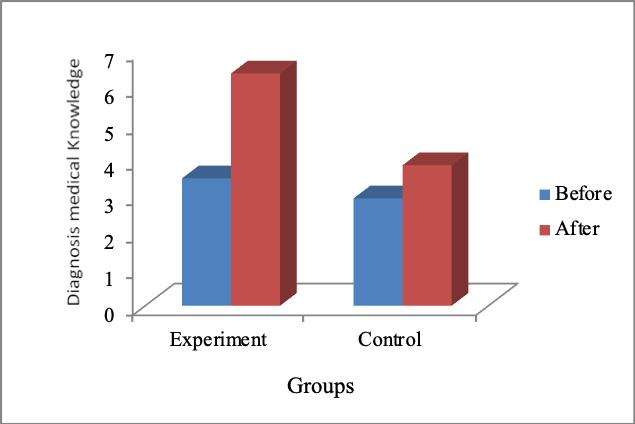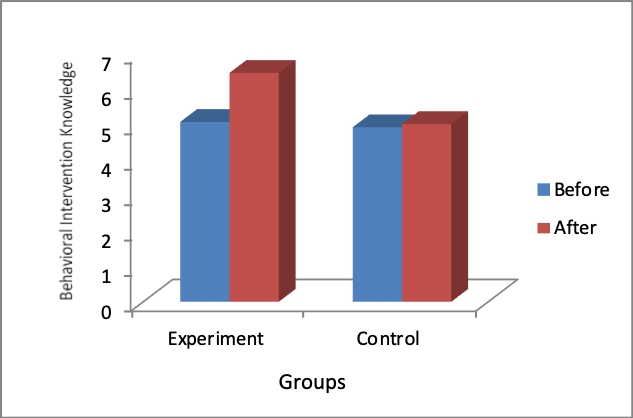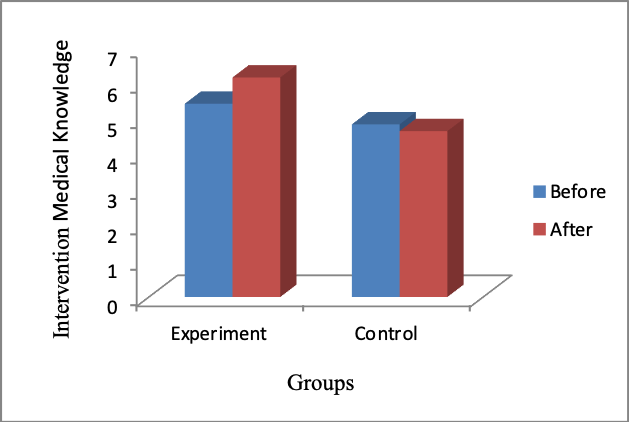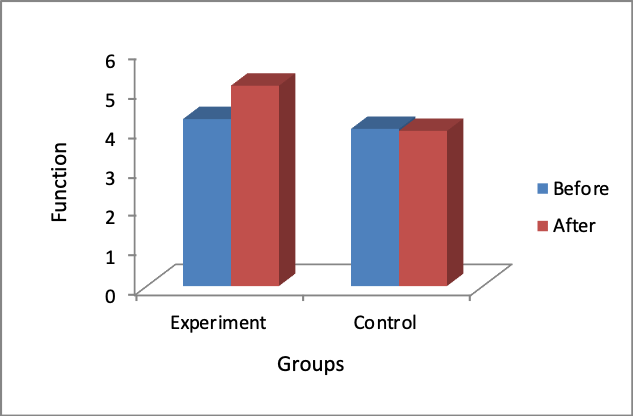Abstract
Keywords: Autismpara-educatorsapplied behavior analysissocial skillsSol’s tip training program
Introduction
This article presents the initial results of a study that was conducted to examine the contribution of a training program to increase the knowledge and self-efficacy of paraeducators (aides) working with students with ASD in elementary school inclusion classes. Most of the policy in the developed world adopted the approach to special education that advocates integrating children with special needs within regular education (Shaw, 2017). Following this trend, and following the Special Education Law (Knesset Israel, 1988) in Israel, which entitles equal rights for education of people with special needs, an additional amendment to the special education law (Knesset Israel, 2018) was added in 2018. The main points of this addition relate to the management of various committees concerning the inclusion of the student, the parents’ choice of the educational framework for the child, and the receipt of the "basket" of integration services according to the level of need and functioning and not only based on type of disability. Additionally, according to Israeli law, students with ASD between the ages of 6-12 who are included in regular elementary classes are entitled to be accompanied by an aide (paraeducator).
The role of the aide in Israel is to help the students and promote their individualized educational plan (IEP), which includes academic, social, and other goals (Knesset Israel, 2002). Definitions of the role include academic help for the student such as help organizing and preparing supplies, acquiring skills, involvement in promoting social skills, physical assistance, etc., in line with the student’s needs (Ministry of Education Director General Circular 1.2-39). Similarly, in the United States, Berger (2014) identified areas of responsibility including learning support, teaching personal hygiene, personal development, developing independent skills, managing behavior, and administrative support. Rando (2017) claims that paraeducators have a central role in the education of children with special needs, particularly those with ASD. She found that 80% of the paraeducators in the U.S. work with children with ASD, and the number of education aides is increasing beyond the number of special education teachers. Despite the scope of the job and its importance, in Israel, the responsibility for the student’s IEP is placed on the classroom teacher (Ministry of Education Director General Circular 1.2-37).
In the literature, there are a number of common names for the role of the supporter for a child with special needs, including: teacher, teacher aides, paraprofessionals, assistants, aides, 1:1, instructional assistants, or paraeducators (Berger, 2014; Sheehey, Wells, & Ogata, 2018). This article will use the term paraeducators to describe those who accompany a child with ASD. The researcher believes that this term best describes the actual role of the individual as a supporter of the learning of a child with ASD. Previous studies on the training of paraeducators demonstrate that although they are responsible for the academic and social support of students with ASD in inclusion settings, they receive little to no training (Giangreco, Suter, & Doyle, 2010; Rando, 2017).
In the framework of the current study, a training program focusing on social skills was offered based on behavioral principles and designed for paraeducators who work with children with ASD in inclusion settings. This program examined the impact of training on paraeducators’ self-efficacy, knowledge of ASD, and knowledge of functioning in social situations. The Social Skills Training Inclusion for Paraeducators (Sol’s Tip) is an innovative training program for paraeducators to acquire tools to promote the social skills of elementary school students with ASD. The program was developed by the author with Dr. Michal Hircshmann, and is based on elements from the behavioral approach, which has been proven to be effective for working on social skills with children with ASD (Camargo et al., 2014; Gillis & Buttler, 2007; Matson, Matson, & Rivet, 2007; Vaughn et al., 2003). The purpose of the program is the development of age-appropriate social skills for students in inclusion settings. During ten weekly sessions, paraeducators receive a background on ASD, are exposed to behavioral principles relevant to their fieldwork, and learn a theoretical strategy for identifying the students’ social difficulties and adapting an intervention program for promoting the students. In addition, the program presents relevant social values for work with children with ASD from 12 behavioral aims that were identified by Eldar (2007) and Eldar and Ayvazo (2009) in the “Educating through the Physical Model”. These values include social attention and focus, adhering to game/activity rules, waiting, persistence, ending an enjoyable activity, cooperation, self-regulation, and losing respectfully. These social skills and values are practiced using games that are common in the daily life of elementary school students.
The Sol’s Tip training program was developed in three stages. In the first stage, five goals were defined for training: gaining familiarity with ASD and applied behavioral analysis (ABA), learning basic techniques for gathering data, learning ways to identify missing social skills, familiarity with tools to adapt behavioral support for promoting social communication, and learning strategies for teaching social skills using games. The second stage was the construction of the syllabus for ten sessions (as detailed previously), each lasting three academic hours. Teaching methods in the training focused on theoretical lessons that included discussion and examples of common social situations in inclusion and workshops to implement the material. In the third stage, a WhatsApp group was designed for the paraeducators participating in the training. The group was used after five sessions to help accompany implementation of the training in the field, as well as after ten training sessions.
There are a small number of studies that demonstrate a positive trend in training paraeducators to implement social interventions during non-academic times (Koegel, Sunny, & Koegel, 2014). There are training programs for paraeducators based on the naturalistic behavioral approach, called pivotal response training (PRT), which is recognized by the USA National Autism Center (2015) and backed by research (Simpson, 2005). This approach is defined as a consistent approach that focuses on important areas, which can lead to additional improvements in other skills and general improvement in the quality of social interactions and communication (Cowan & Allen, 2007; Koegel & Frea, 1993; Koegel, Vernon, & Koegel, 2009; Robinson, 2011). In an expansion of a previous study that focused on training paraeducators, Koegel et al. (2014) examined a training program that teaches paraeducators how to integrate the students’ areas of interest with social activities or games, and how to organize the game/activity to create cooperation between children with ASD and typically developing children. Additionally, the program taught the paraeducators the importance of observing the form of the students’ social interaction with their friends. In contrast to other training programs, the program in the current research focuses on the development of specific social values and skills for the child in inclusion setting, which the paraeducator can identify and train the child as needed. The role of the paraeducator changes from a passive role, where s/he implements a written intervention, to one where s/he takes an active role in constructing an appropriate intervention and its application to the needs of the child in an inclusion class.
Problem Statement
There are training programs for paraeducators to work on social skills with children with ASD in various frameworks. Some of these programs are based on behavioral principles. However, there are no programs that expose paraeducators to the rationale of a strategy with which they can detect the missing social skills of the child with whom they work and construct an appropriate intervention that includes generalization to the natural surroundings. The program in this research essentially transforms paraeducators’ role to an active role. The existing programs emphasize the training of paraeducators to implement various stages of interventions to promote common social skills, yet there is a gap in their knowledge. The current training program was developed to address the needs of the paraeducators. This study examines the contribution of the Sol’s Tip training program to the paraeducators’ self-efficacy, knowledge of ASD, and knowledge of how to function in social situations common in the daily lives of students in inclusion settings.
Research Questions
-
What is the contribution of a behavior training program to paraeducators’ knowledge of ASD and knowledge of functioning in social situations relating to their work with children with ASD in inclusion settings?
-
What is the contribution of a behavior training program to the self-efficacy of paraeducators working with children with ASD in inclusion settings?
Research Hypotheses
1a:The training program will increase paraeducators’ knowledge of ASD
1b: The training program will increase paraeducators’ knowledge of functioning in social situations when working with children with ASD in inclusion settings.
2a:The training program will increase paraeducators’ self-efficacy.
Purpose of the Study
The purpose of this study is to evaluate the contribution of a behavior training program to paraeducators’ self-efficacy, knowledge of ASD, and knowledge of functioning in social situations when working with children with ASD who are included in elementary general education classes.
Research Methods
Participants
The participants included 43 paraeducators who work with students with ASD who are included into elementary schools in a city in central Israel, of which 42 participants were women. The experimental group included 20 paraeducators and the control group included 23. The study was approved by the head research scientist of Israel, and the participants received an explanation and signed consent forms agreeing to participate in the study.
Descriptive results show that on average, participants were 40-years-old (
Tools
In the current study, four questionnaires were administered to participants, as detailed below.
Demographic questionnaire
This questionnaire includes eight items: gender, age, education, nationality, marital status, number of children, years of experience working as a paraeducator for a child with ASD, and training in ASD. In addition, there was an open question relating to the reason for choosing to work as a paraeducator to differentiate the before and after questionnaires.
Self-efficacy
The study used the self-efficacy scale developed by Chen and Gully (1997) and revalidated by Chen, Gully, and Eden (2001). This was translated to Hebrew by Grant (as cited in Knesset Israel, 1998) and titled New General Self-Efficacy. The questionnaire includes eight items including one-dimensional statements such as, “I can achieve most of the goals I set for myself” or “In general, I think I can achieve what is important to me.” Respondents rank the statements using a five-point Likert-type scale ranging from 1 (agree very little) to 5 (agree very much). Reliability of the measure was high, with Cronbach’s α = 0.93. The questionnaire is scored according to the average ranking of the statements, such that scores range from 1 to 5, with a higher score reflecting a higher level of self-efficacy.
Knowledge of ASD
Knowledge of ASD was examined by four statements written by the researcher. Two statements relate to the diagnosis of ASD, and two relate to interventions and treatment of ASD. In each area, one statement focuses on the
Knowledge of Functioning in Social Situations
The purpose of this measure was to evaluate knowledge relating to working with elementary school children with ASD in inclusion settings. The questionnaire includes functioning in social situations common to the population of children with ASD in public schools. The researcher developed this questionnaire with the consultation of experts in the field and behavior analysts who work with elementary school children with ASD. A questionnaire was created with nine items, each having four possible choices. The questions describe social situations that paraeducators encounter in their work with children with ASD in inclusion settings. Respondents are asked to mark the correct answer for each presented situation. For example:
Yoav is a student with ASD in a 4th grade classroom in inclusion setting, who likes to play soccer. When he sees his classmates playing, he joins them without receiving their permission. His friends always get angry when this happens. What can be done?
Explain to Yoav that he needs to ask permission
Define the goal, gather data, find games that are appropriate for the goal and provide feedback
Speak to the guidance counselor when she comes
Approach the children
Only one of these choices is correct. The correct answers were tallied, such that scores could range from 0 (no correct answers) to 9 (all answers correct). The greater the number of correct answers, the greater the knowledge of social situations.
Procedure
Table
The municipalities proposed participation in the study to 48 randomly selected paraeducators. After the intervention, an attempt was made to reach all 48 participants, but five were not identified, leaving the sample with 43 participants. Participants were randomly divided into an intervention group (n=20), which would receive the training specific to ASD, and a control group (n=23) that did not receive the training. The knowledge of ASD, knowledge of functioning in social situations, and self-efficacy questionnaires were administered before and after the intervention.
Findings
Findings relating to research question 1 and hypothesis 1a - Knowledge of ASD
A one-way MANOVA revealed no significant difference between the groups prior to the intervention (F(9,32) = 2.45, n.s.). To examine differences between groups after the intervention a 2 x 2 (group x time) MANOVA was conducted with repeated measures for each variable. Results of these analyses are presented below.
To examine differences between the groups regarding knowledge of ASD, a 2 x 2 MANOVA (group x time) was conducted. Results revealed significant differences for time [F(4,32) = 10.71,
From Table
Figure

For the measures relating to knowledge of behavioral intervention approaches there was also a significant interaction of group x time. This interaction is depicted in Figure

As can be seen in Figure
Results of the analysis of paraeducators’ knowledge of the medical intervention approach are presented in Figure

Findings relating to research question 1 and hypothesis 1b - Knowledge of functioning in social situations and findings relating to research question 2 and hypothesis 2 – Self-efficacy
Table
For both measures, there was a significant increase from before to after the intervention program, but a significant interaction of group x time was found only for knowledge of functioning in social situations.
Figure

The study’s findings support the first two hypotheses, according to which the group that underwent Sol’s Tip training would show a more significant improvement than the group that did not receive the training. The third hypothesis, which relates to the level of efficacy, was not supported. No significant difference was found between the groups in terms of change before and after training; both groups demonstrated a similar level of improvement.
Conclusions
Social skills are the “Achilles heel” of children diagnosed with ASD who are in inclusion classes in elementary schools. The study’s findings shed light on the contribution of the Sol’s Tip training program to self-efficacy, knowledge of ASD, and the functioning of the paraeducators in common social situations facing children with ASD in inclusion settings. The gap in knowledge that led to this study was a lack of appropriate training programs for the role of paraeducators working with children with ASD. As such, this study provides evidence-based knowledge.
On the theoretical level, this study contributes to the knowledge in the area of including children with ASD into regular classrooms in two ways:
Development of a new intervention program for paraeducators
Development of an active role for paraeducators in developing personalized programs for the students
On the practical level, it is possible to implement this training program in other countries and cultures where children with ASD are in inclusion settings and receive the help of aides. This thus provides a universal contribution to this knowledge area.
Future studies should focus on expanding the intervention group to include children with ASD of different ages and other populations of paraeducators. Another possibility is a study that adopts the strategies that underlies this training for the classroom environment and the academic aspect that paraeducators encounter in the daily functioning of children with ASD in inclusion, in elementary school. Also, the strategy can be adopted to other special needs populations that there a need arises to promote their social skills.
References
- Berger, D. A. (2014). "I do as much as any teacher"-role conflict among paraeducators in private special education schools (Doctoral dissertation). Retrieved from ProQuest Central (1651954424).
- Camargo, S., Rispoli, M., Ganz, J., Hong, E., Davis, H., & Mason, R. (2014). A review of the quality of behaviorally based intervention research to improve social interaction skills of children with ASD in inclusive settings. Journal of Autism Developmental Disorder, 44, 2096-2116.
- Chen, G. Gully, S., & Eden, D. (2001). Validation of a new General Self-Efficacy Scale. Organizational Research Methods, 4, 62-83.
- Chen, G., & Gully, S. M. (1997). Specific self-efficacy, general self-efficacy, and self-esteem: Are they distinguishable constructs. In 57th Annual Meeting of the Academy of Management. Boston.
- Cowan, R. J., & Allen, K. D. (2007). Using naturalistic procedures to enhance learning in individuals with autism: A focus on generalized teaching within school setting. Psychology in the Schools, 44, 701-715.
- Eldar, E. (2007). Learning through movement – connecting physical education and Applied Behavior Analysis. Tel Aviv: Maalot.
- Eldar, E., & Ayvazo, S. (2009). Educating through the physical—rationale. Education and Treatment of Children, 32(3), 471–486.
- Giangreco, M., Suter, J., & Doyle, M. (2010). Paraprofessionals in inclusive schools: A review of recent research. Journal of Educational & Psychological Consultation, 20(1), 41-57.
- Gillis, J. M., & Buttler, R. C. (2007). Social skills interventions for preschoolers with autism spectrum disorder: A description of single-subject design studies. Journal of Early & Intensive Behavior Intervention, 4(3), 532-547.
- Knesset Israel (1988). Special Education Law of 4758 (In Hebrew)
- Knesset Israel (1998). Equal Rights of Persons with Disabilities Law of 5758 (In Hebrew)
- Knesset Israel (2002). Special Education Law of 1876 (In Hebrew)
- Knesset Israel (2018). Special Education Law (11th amendment) of 2734. (In Hebrew)
- Koegel, R. L., & Frea, W. D. (1993). Treatment of social behavior in autism through the modification of pivotal social skills. Journal of Applied Behavior Analysis, 26, 369-377.
- Koegel, R. L., Sunny, K., & Koegel, L. K. (2014). Training Paraprofessionals to Improve Socialization in Students with ASD. Journal of Autism and Developmental Disorders, 44, 2197-2208.
- Koegel, R. L., Vernon, T. W., & Koegel, L. K. (2009). Improving social initiation in young children with autism using reinforcers with embedded social interactions. Journal of Autism and Developmental Disorders, 39, 1240-1251.
- Matson, J. L., Matson, M. L., & Rivet, T. T. (2007). Social-skills treatments for children with autism spectrum disorders. Behavior Modification, 31(5), 682-707.
- National Autism Center (2015). Evidence-based practice and autism in the schools (2nd edition). Raldoph, MA: National Autism Center. Available at https://www.nationalautismcenter.org/resources/
- Rando, S. (2017). "Just a Para": Exploring Power Relations in the Work of Paraeducators (Doctoral dissertation). Retrieved from ProQuest Dissertations Publishing (10278882)
- Robinson, S. E. (2011). Teaching paraprofessionals of students with autism to implement Pivotal Response Treatment in inclusive school settings using a brief video feedback training package. Focus on Autism and Other Developmental Disabilities, 26(2), 105-118.
- Shaw, A. (2017). Inclusion: the role of special and mainstream schools. British Journal of Special Education, 44(3), 292-312.
- Sheehey, P. H., Wells, J. C., & Ogata, V. F. (2018). Paraeducators' perceptions and experiences working with diverse families. Rural Special Education Quarterly, 37(1), 44-51.
- Simpson, R. L. (2005). Evidence-based practices and students with autism spectrum disorders. Focus on Autism and Other Developmental Disabilities, 20(3), 140-149.
- Vaughn, S., Kim, A., Sloan, C. V. M., Hughes, M., Elbaum, B., & Sridhar, D. (2003). Social skills interventions for young children with disabilities: A synthesis of group design studies. Remedial and Special Education, 24(1), 2-15.
Copyright information

This work is licensed under a Creative Commons Attribution-NonCommercial-NoDerivatives 4.0 International License.
About this article
Publication Date
17 June 2020
Article Doi
eBook ISBN
978-1-80296-084-6
Publisher
European Publisher
Volume
85
Print ISBN (optional)
-
Edition Number
1st Edition
Pages
1-814
Subjects
Teacher, teacher training, teaching skills, teaching techniques, special education, children with special needs
Cite this article as:
Lazar-Rosenzweig, J., & Stan, C. (2020). The Contribution Of A Paraeducator Training Program To Knowledge And Self-Efficacy. In V. Chis (Ed.), Education, Reflection, Development – ERD 2019, vol 85. European Proceedings of Social and Behavioural Sciences (pp. 90-101). European Publisher. https://doi.org/10.15405/epsbs.2020.06.10
